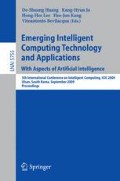Abstract
Reservoir description for simulation studies requires good knowledge of the permeability. Reliable permeability is only available from laboratory tests on cores, which are usually taken from a small percentage of the wells. In an offshore gas field only three wells have core data and all wells have full set of conventional log data. By using concept of hydraulic flow unit, statistical methods and intelligent systems is made a model for estimation of reservoir properties. Graphical statistical methods are applied for classification of hydraulic flow units. The Sugeno-type of fuzzy inference system conjunction with backpropagation network and subtractive clustering is used for prediction of flow zone indicator, permeability is then calculated from mean flow zone indicator value and corresponding porosity.
Access this chapter
Tax calculation will be finalised at checkout
Purchases are for personal use only
Preview
Unable to display preview. Download preview PDF.
References
Kozeny, J.: Uber Kapillare Leitung des Wassers im Boden, Stizurgsberichte. Royal Academy of Science, Vienna, Proc. Class 1 136, 271–306 (1927)
Carmen, P.C.: Fluid Flow through Granular Beds. Trans. AIChE 15, 150–166 (1937)
Amaefule, J.O., Altunbay, M., Tiab, D., Kersey, D.G., Keelan, D.K.: Enhanced Reservoir Description: Using Core and Log Data to Identify Hydraulic (Flow) Units and Predict Permeability in Uncored Intervals/wells. In: Presented at 68th Ann. Tech. Conf. Houston, Tx (1993)
Abbaszadeh, M., Fujii, H., Fujimoto, F.: Permeability Prediction by Hydraulic Flow Units, Theory and Applications. SPE Formation Evaluation Journal, 263–271 (December 1996)
Anderberg, M.R.: Cluster Analysis for Applications. Academic Press, New York (1973)
Soto, B.R., Garcia, J.C., Torres, F., Perez, G.S.: Permeability Prediction Using Hydraulic Flow Units and Hybrid Soft Computing Systems. In: SPE 71455 (2001)
Jang, J.S.: ANFIS: Adaptive Network based Fuzzy Inference Systems. IEEE Transations on Systems, Man and Cybernetics 23(3), 665–685 (1993)
Chiu, S.: Fuzzy Model Identification Based on Cluster Estimation. Journal of Intelligent & Fuzzy Systems 2(3) (1994)
Zadeh, L.A.: Knowledge Representation in Fuzzy Logic. IEEE Transactions on Knowledge and Data Engineering 1, 89–100 (1989)
Sugeno, M.: Fuzzy Measures and Fuzzy Integrals: a Survey. In: Gupta, M.M., Saridis, G.N., Gaines, B.R. (eds.) Fuzzy Automata and Decision Processes, North-Holland, NY, pp. 89–102 (1977)
Author information
Authors and Affiliations
Editor information
Editors and Affiliations
Rights and permissions
Copyright information
© 2009 Springer-Verlag Berlin Heidelberg
About this paper
Cite this paper
Salehi, F., Salehi, A. (2009). Using Intelligent System for Reservoir Properties Estimation. In: Huang, DS., Jo, KH., Lee, HH., Kang, HJ., Bevilacqua, V. (eds) Emerging Intelligent Computing Technology and Applications. With Aspects of Artificial Intelligence. ICIC 2009. Lecture Notes in Computer Science(), vol 5755. Springer, Berlin, Heidelberg. https://doi.org/10.1007/978-3-642-04020-7_14
Download citation
DOI: https://doi.org/10.1007/978-3-642-04020-7_14
Publisher Name: Springer, Berlin, Heidelberg
Print ISBN: 978-3-642-04019-1
Online ISBN: 978-3-642-04020-7
eBook Packages: Computer ScienceComputer Science (R0)

